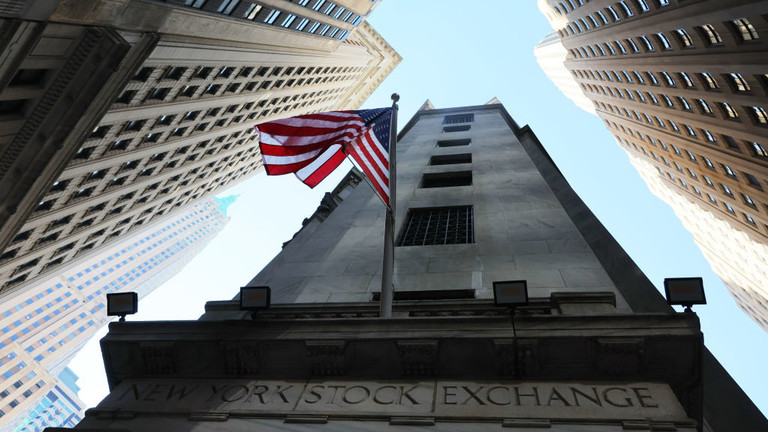The American economy is facing a significant challenge as it appears to be highly vulnerable to any sustained drop in asset prices. Recent market events, such as the steep decline in the Nikkei 225 and the global market rout, indicate the severity of the situation. The triggers for the market selloff are mainly related to the disappointing US jobs report and the downfall of the AI trade, which has caused significant losses in the tech stocks market.
One of the critical factors behind this situation is the breaking of the dollar-yen carry trade. This trade involved investors borrowing in yen and investing in higher-yielding US assets. However, when the Bank of Japan raised interest rates and indicated the likelihood of more increases, many investors faced margin calls, leading to mass capitulation in these carry-trade positions. Consequently, investors were forced to sell other assets to meet margin calls, intensifying the selling pressure in the market.
Predicting the market’s direction in the short term is challenging, as many investors are trying to seize opportunities during the market downturn. Some analysts argue that the panic is overblown and that the market will soon stabilize. Instead of making a forecast, it may be more valuable to understand the underlying factors at play in the current situation.
First, it’s crucial to recognize that the current market turmoil is primarily a result of a positioning unwind rather than a response to an economic shock. Many equity investors overextended themselves by chasing the tech stocks bubble, often financing their investments with borrowed yen. As a result, margin calls and forced liquidations are widespread, adding to the chaos in the market.
Looking ahead, the key factor to monitor is the market’s perception of the Federal Reserve’s next steps and the actions that will follow. This is not just because the Fed possesses absolute power but because the situation reflects structural features of the US economy.
During its July meeting, the Fed hinted at a rate cut in September after keeping interest rates unchanged. Anticipations of rate cuts were already rising before recent events, but the market meltdown has accelerated this conversation. Previously, futures tied to the federal funds rate suggested an 87% chance of a 25 basis-point cut in September, but investors are now pricing in about 55 basis points of easing at that meeting and 100 basis points by November. In other words, there is a 20% chance of an emergency rate cut.
The magnitude of market expectations for rate cuts is not solely based on the recent downbeat employment report. Rather, it reflects the belief that the Fed will step in and rescue the markets whenever they encounter difficulties. This perception exists because the Fed is seen to have an unspoken mandate of market stability in addition to its official mandates of price stability and full employment. This belief is known as the Fed put, which equates the Fed’s intervention with a safety net, just as a put option guarantees a minimum price for an asset.
The Fed has repeatedly shown that it is willing to intervene in the markets whenever their stability is threatened, whether through direct actions or more covert methods. The last 48 hours have reinforced the idea that some version of the “Fed put” remains intact. While an emergency rate cut may not be on the immediate horizon, the central bank is likely to take measures to calm the markets by signaling future rate cuts for the rest of the year. In extreme situations, more forceful interventions can be expected.
However, it is essential to understand that the Fed’s commitment to market stability is not simply due to corruption or personal motives of its committee members. It stems from a deep structural distortion in the US economy that is often overlooked. The US economy is heavily financialized and heavily leveraged, and the wealth of many Americans, especially the elite classes, is closely tied to financial asset prices. A sustained and significant drop in markets would have catastrophic consequences, as a large part of the GDP is connected to asset prices in some way.
To emphasize the dependence on financial markets, even the tax base relies on them. For instance, in 2023, despite a growing economy and rising personal income, the federal government’s total receipts were down by about 7% compared to the previous year. This was primarily due to a drop in individual income tax receipts because capital gains realizations from prior years were lower. The decline in capital gains was a result of the poor performance of US stocks in 2022.
Market instability is the biggest fear for the Federal Reserve and those in power in Washington and New York. They are willing to adopt short-term thinking and introduce moral hazards to keep the markets buoyant. This may lead to inflation or other distortions in the economy, but as long as asset prices continue to rise, the investment class can protect themselves from the effects of inflation. Consequently, economic disparities between the wealthy and the rest of society continue to widen.
While the current volatility in the market is concerning, it is unlikely that it will lead to an apocalypse, at least not in the form of a stock-market collapse. Stock markets can always be reinflated through interventions such as money printing. Additionally, it is hard to imagine the Fed standing idly by while markets spiral into oblivion, considering its interests in market stability.
The true priorities of the Fed will become apparent through its actions in response to market conditions. While there may not be explicit statements about rescuing the markets, the Fed’s actions will speak louder than words. Observing how the Fed addresses the current situation will provide insights into its approach and priorities.

